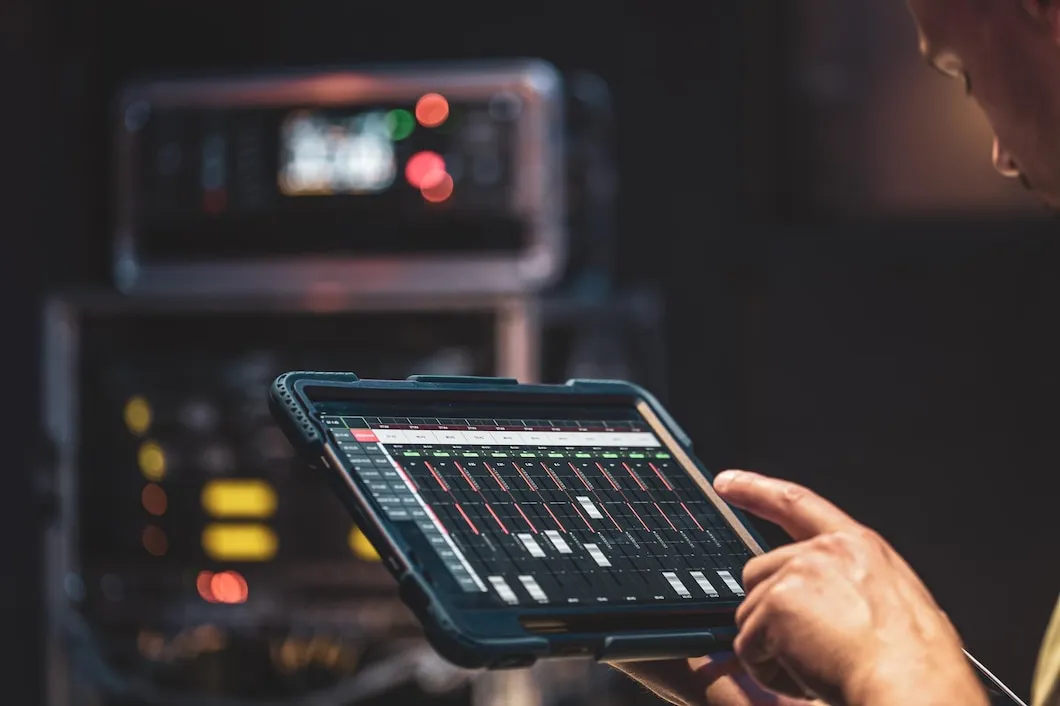We independently review all recommended products and services. When you make a purchase using our links, we may earn a commission.
How To Record Upstairs Neighbors Stomping: 7 Tried and True Methods

We independently review all recommended products and services. When you make a purchase using our links, we may earn a commission.

Are you tired of the constant stomping and loud noises coming from your upstairs neighbors?
Living in an apartment or a building with others can be fun, but when neighbors make a lot of noise, it can make things not so nice. Fortunately, there are ways to address this common issue, starting with recording the noise.
In this article, we'll explore how to record an upstairs neighbor stomping. Addressing the problem directly with your neighbors or escalating it to building management can both be effective strategies.
Having a recording can provide valuable evidence to support your case in either scenario. We'll show you how to do it effectively, ensuring the process is easy and stress-free.
 Pro Tip
Pro TipA U.S. Department of Housing and Urban Development report highlights noise as a prevalent tenant complaint, contributing to up to 80% of disputes with landlords. Additionally, the report underscores the health impact of noise, linking it to elevated stress levels, hypertension, and potential heart disease.

Before you start recording the stomping sounds from your upstairs neighbors, it's important to understand the legal aspects involved. Different places have different rules about recording people without their knowledge.
Many areas prohibit recording someone without their agreement, especially if they have a reasonable expectation of privacy. This means you need to be careful about where and how you record the noise.
Be sure to look up the rules in your area to know what you can and can't do. If you're unsure, it's a good idea to seek advice from a legal expert. They can help you understand your rights and responsibilities when it comes to recording noise disturbances.
When recording, always keep in mind that you should not invade anyone's privacy. This means you should avoid recording private talks or places where your neighbors expect privacy, like their bedrooms or bathrooms.
 Pro Tip
Pro TipIn a recent study by the Department of Residential Harmony, a surprising 73% of individuals troubled by noisy neighbors successfully resolved the issue by collecting compelling evidence.

Before jumping to record the noise, consider having a conversation with your neighbors about the issue. They might not even realize that their stomping is causing a disturbance.
Approach the conversation calmly and respectfully. Choose a time when both you and your neighbors are not busy or stressed. Knock on their door or leave a polite note explaining the situation and expressing your concerns about the noise.
When you talk to your neighbors, try to explain how the noise is affecting you instead of blaming them. Use "I" statements to describe how the noise is impacting your daily life and how you feel. Saying something like, "I can not concentrate at work due to the noise from upstairs," would be an example of what you could say.
Listen to your neighbors' perspectives and be open to finding a solution together. They may not have realized that they were being too loud or may have their reasons for the noise.
By approaching the situation with empathy and understanding, you're more likely to reach a positive outcome.
If talking to your neighbors directly feels awkward, you can contact your building management or homeowner's association for help. They can act as a middle person and arrange a conversation between you and your neighbors.

Keeping a record of the noise disturbances caused by your neighbors is essential for addressing the issue effectively. Start by creating a log where you can note down the dates, times, and details of each disturbance.
In your record, jot down details about the noise you're hearing, like if it's stomping, loud music, or voices. Also, note when it happens, how long it lasts, and how it's affecting you.
For example, you could write that the stomping disturbed your sleep or attention at 10:00 PM and continued for thirty minutes.
It's also useful to keep a record of what you've done to try to solve the noise problem. This could include talking to your neighbors or contacting the building manager. This can provide a clear timeline of your efforts to resolve the problem.
Besides keeping written notes, you can also use technology to record noise disruptions. There are apps for smartphones that can record sound all the time or when they hear loud noises.
These recordings can give you extra proof of the problem, which might help if you have to take the issue to someone else for help.

Using sound measurement tools can help you objectively assess the noise levels of your noisy upstairs neighbor. These tools are really handy because they give you solid proof of the noise problem.
This evidence can be really helpful when you're talking to your neighbors or the building manager about the issue.
Here are a few options to consider:

Setting up recording devices properly is crucial for capturing noise disturbances from your loud upstairs neighbors effectively.
Here are some steps to ensure you're recording the noise accurately:

There are several approaches you can take to help mitigate the impact of the noise:

Once you've recorded the noises from your noisy neighbors upstairs, it's important to listen to them carefully. Pay attention to the type of sound, how loud it is, and how long it lasts.
Compare what you hear in the recordings with what you've written down about the disturbances. Keep track of when the loud noises happen by noting the time on the recordings.
Think about how the noise affects your daily life and ask others if they've noticed it too. Write down what you find out, including any important details.
This will help you understand the problem better and talk about it with your neighbors or the people who manage your building.

The secret to handling noise complaints from your noisy neighbors upstairs is to handle the matter coolly and politely. Start by discussing the problem with your neighbors directly, if possible.
Explain how the noise is affecting you and ask if there's anything they can do to help reduce it. Be open to finding a solution together.
If talking to your neighbors does not address the problem, contact your building management or homeowner's organization for help. They may be able to mediate the situation or enforce noise regulations if necessary.
In some cases, it may be helpful to seek assistance from a professional mediator or legal advisor. They can offer advice on how to properly handle the problem and support a solution that benefits everyone involved.
Throughout the process, keep communication lines open and remain patient. Resolving noise issues amicably often takes time and cooperation from all parties involved.
If you try to understand the situation and are willing to find a solution, you can work toward fixing the problem peacefully and making your living space more harmonious.
Dealing with noisy upstairs neighbors can be tough, but there are ways to handle it. By following the steps in this guide, you can deal with the problem effectively.
First, ensure you understand the rules about recording noise and politely talk to your neighbors about the issue. Keep a record of the noisy times and use tools to measure the noise accurately.
Set up your recording devices correctly and listen carefully to the recordings to understand the problem better. You can also try using things like soundproofing or white noise machines to help.
Remember, it's important to stay calm and communicate openly with your neighbors. With patience and effort, you can find a solution that works for everyone involved.